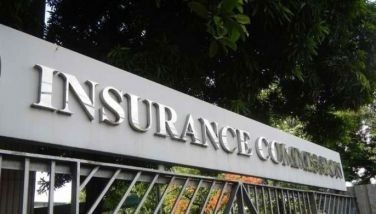Need for speed
The appetite for faster Internet speeds and richer data applications is becoming more and more unsatiable such that telecommunications companies worldwide have to continuously invest huge amounts just to keep up with demand.
Three years ago, there was huge doubt as to whether or not there was still need for the 4G (fourth generation) mobile technology standard otherwise known as long term evolution (LTE) considering that consumers were still enjoying the benefits of 3G (third generation) and telcos had just spent megabucks for their 3G infrastructure and network.
But consumers wanted more, just like they keep changing their mobile phones, tablets, laptops and other devices as soon as the new models come out. I can’t keep up. I’m still enjoying my IPhone 4S and IPad 2 though it looks ancient side by side IPhone 5 and the new IPad (IPad 3).
Now back to LTE.
According to information and analytics provider IHS, just three years after the technology’s original deployment, worldwide subscribers to the 4G wireless standard are projected to surpass the 100-million mark this year.
It said in a report that LTE subscribers worldwide will reach 198.1 million in 2013, up by a whopping 115 percent from 92.3 million last year.
IHS noted that since being adopted in 2010 with just 612,000 users, the 4G next-generation wireless technology has grown by leaps and bounds, surging by an astounding factor of 22 to 13.2 million subscribers in 2011, and then jumping another 599 percent in 2012 to nearly 100 million subscribers.
By 2016, LTE will claim more than one billion users, equivalent to a five-year compound annual growth rate of 139 percent, it added.
According to Wayne Lam, senior analyst for wireless communications at IHS, rapid adoption will drive design innovations, particularly in smartphones, but issues like spectrum fragmentation will also remain an overhang for the LTE industry that requires attention.
IHS noted that globally, wireless network operators have been continually building the infrastructure for LTE technology, driven by increased appetite among consumers for faster content delivery, feature-rich applications and expansive mobile services such as social networking.
It explained that the bulk of growth during the last two years also came from smartphone upgrades, especially as 4G LTE technology hit top-of-mind for data-savvy consumers. This is because more than any other type of phone, smartphones are able to take further advantage of the faster data connectivity provided by LTE, which leverages the kind of low-latency, always-on mobile broadband service that consumers now demand, IHS said.
The report further noted that compared to previous cellular standards, LTE with its low-latency performance allows the handling of a wider range of applications, such as live video streaming, video conferencing, voice over IP and realtime multiplayer gaming. The report stated, “These new applications, in turn, create fresh market opportunities for component supplier and device manufacturers. In particular, LTE is a force multiplier for innovation among smartphones. To take advantage of a more capable network, device manufacturers are accelerating the pace of innovation for applications processors, touch-screen displays, camera technology and ever-more sophisticated mobile operating systems and software. Such device innovations, in turn, will create ever-more capable smartphones.â€
With the tremendous potential of LTE, even local telcos have placed their bets on this new technology to boost revenues and drive growth.
Wireless leader Smart Communications recently announced that it has made its LTE service accessible in several areas across Luzon, Visayas, and Mindanao as it fires up new LTE cell sites nationwide.
According to Smart Broadband Internet and Data Services head Lloyd Manaloto, the latest round of expansions is the largest and most expansive the telco has achieved ever since the service was made available commercially in August of last year.
Smart officials said that LTE has already outpaced 3G in terms of initial deployment.
Several areas in Davao City in Mindanao, Iloilo City, Cebu City, Mandaue City, and Bacolod City in Visayas, and Baguio City, Laoag City, San Fernando City, Cabanatuan City, Urdaneta City, Antipolo City, Olongapo City, Tagaytay City, and Dagupan City in Luzon now have access to Smart’s LTE service.
The deployment extends Smart LTE’s presence as it covers a total of 46 cities and 69 municipalities nationwide.
Officials noted that powering Smart LTE is the most comprehensive fiber optic cable network in the Philippines.
With 54,000 kms of FOCs installed across the country, Smart, together with parent company PLDT, boast of over four times more fiber power than its competition.
Philippine telecommunications infrastructure has become world-class, and let us all hope that our government will give the telco industry all the support it needs, instead of thinking of ways to milk it, like the proposed tax on text messages.
For comments, e-mail at [email protected]
- Latest
- Trending































